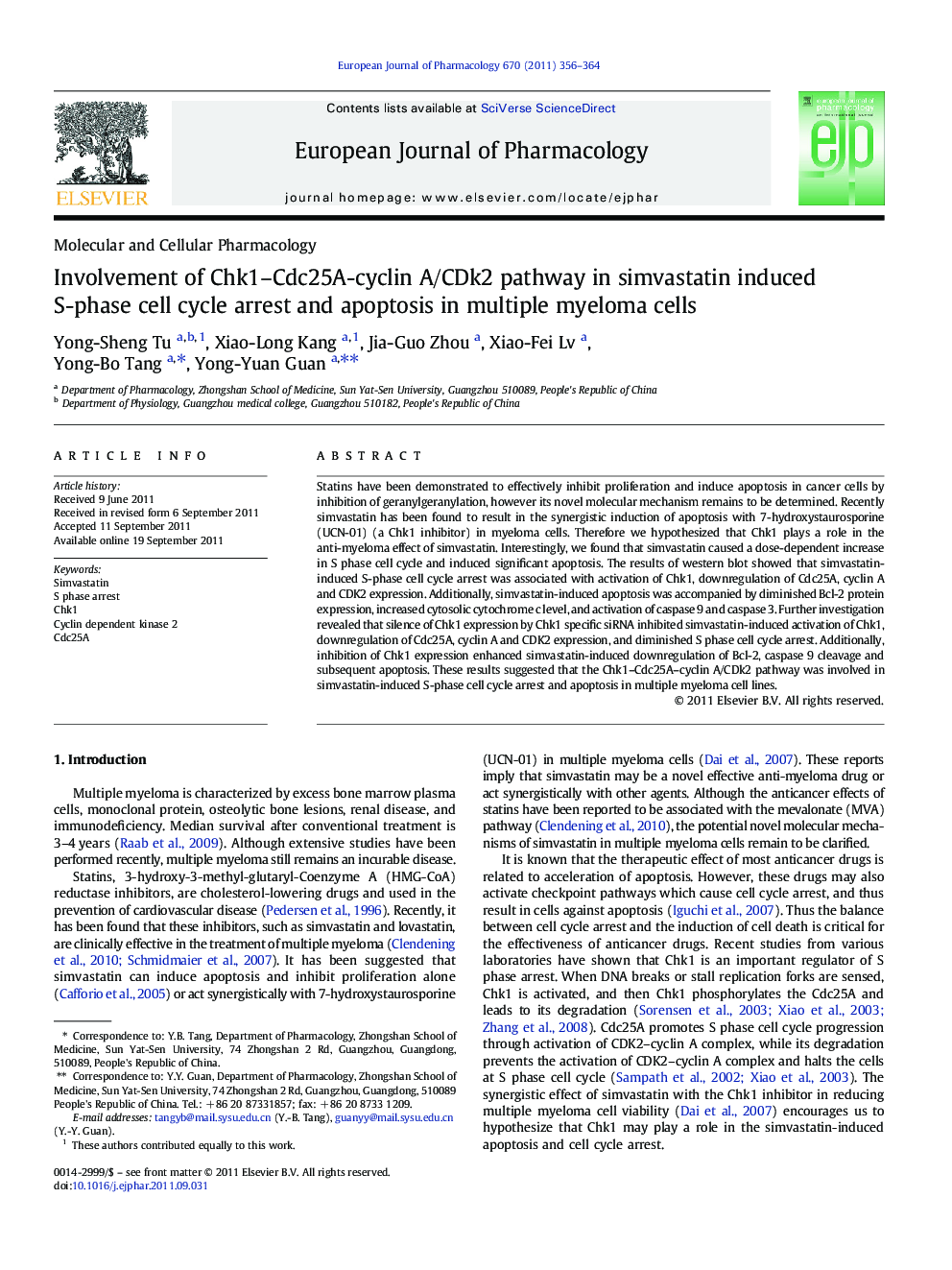| Article ID | Journal | Published Year | Pages | File Type |
|---|---|---|---|---|
| 5829950 | European Journal of Pharmacology | 2011 | 9 Pages |
Statins have been demonstrated to effectively inhibit proliferation and induce apoptosis in cancer cells by inhibition of geranylgeranylation, however its novel molecular mechanism remains to be determined. Recently simvastatin has been found to result in the synergistic induction of apoptosis with 7-hydroxystaurosporine (UCN-01) (a Chk1 inhibitor) in myeloma cells. Therefore we hypothesized that Chk1 plays a role in the anti-myeloma effect of simvastatin. Interestingly, we found that simvastatin caused a dose-dependent increase in S phase cell cycle and induced significant apoptosis. The results of western blot showed that simvastatin-induced S-phase cell cycle arrest was associated with activation of Chk1, downregulation of Cdc25A, cyclin A and CDK2 expression. Additionally, simvastatin-induced apoptosis was accompanied by diminished Bcl-2 protein expression, increased cytosolic cytochrome c level, and activation of caspase 9 and caspase 3. Further investigation revealed that silence of Chk1 expression by Chk1 specific siRNA inhibited simvastatin-induced activation of Chk1, downregulation of Cdc25A, cyclin A and CDK2 expression, and diminished S phase cell cycle arrest. Additionally, inhibition of Chk1 expression enhanced simvastatin-induced downregulation of Bcl-2, caspase 9 cleavage and subsequent apoptosis. These results suggested that the Chk1-Cdc25A-cyclin A/CDk2 pathway was involved in simvastatin-induced S-phase cell cycle arrest and apoptosis in multiple myeloma cell lines.
